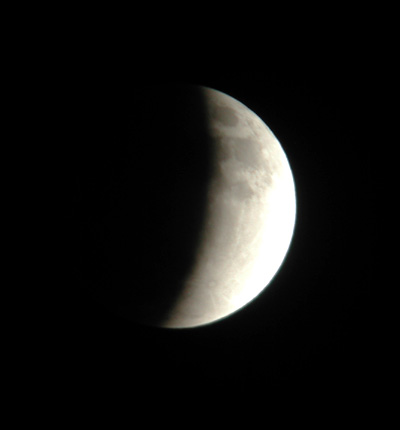
I set up two scopes for this evening's eclipse and I planned to take both film and digital pictures. I had a Celestron CG-11 set up to work with a 35mm camera using 200 speed slide film. I also set up an Edmund Astroscan (4.125" F4.4 Newtonian) telescope for the digital camera. The Astroscan was not driven (it is basically a small Dobsonian scope). The Astroscan's focal length (445mm) works well with the digital camera. A lot of vignetting occurs with the Afocal method that I have to use with my camera, and using the Celestron means the entire Moon will not be in the field of view (a big detriment for lunar eclipse shots). The C-11 was fitted with an F6.3 focal reducer, resulting in a focal length of about 1765mm. This focal length frames the Moon up very nicely on a 35mm format film.
A sampling of photos appears below, all of these are digital camera shots. They are "OK" but nothing great. Part of the problem is that most of them were slightly out of focus. Focus continues to be the biggest problem I have with the digital camera. The viewfinder does not allow for precise focusing, so luck (which I did not have) comes into play. I reduced the size of the photos to minimize the focus problems. Most images at totality were 1/2 second.

Lunar Eclipse, 8 November 2003. Moon not yet in totality

Lunar Eclipse, 8 November 2003. Moon is getting closer to the start of totality.
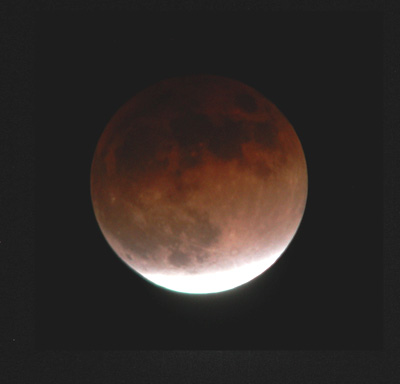
Lunar Eclipse, 8 November 2003. Moon in totality.
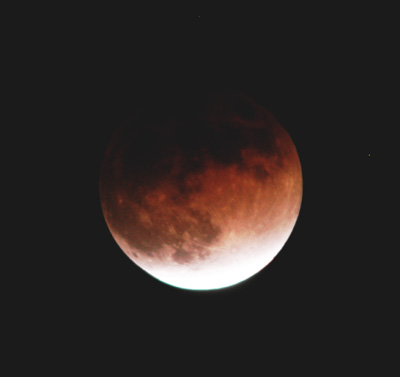
Lunar Eclipse, 8 November 2003.
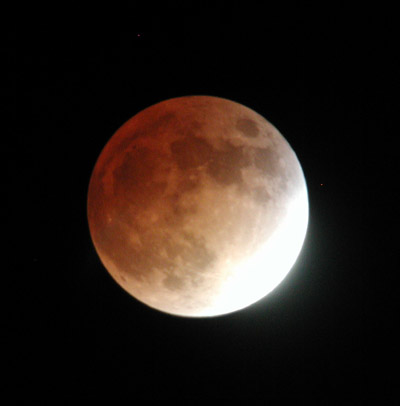
Lunar Eclipse, 8 November 2003.
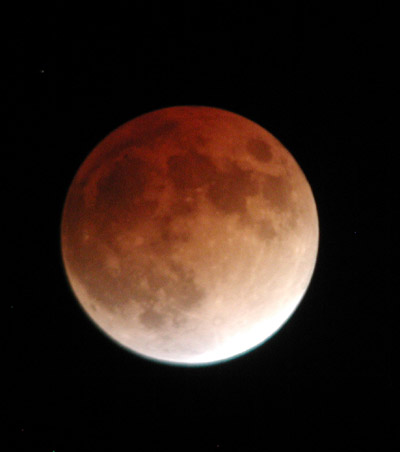
Lunar Eclipse, 8 November 2003.
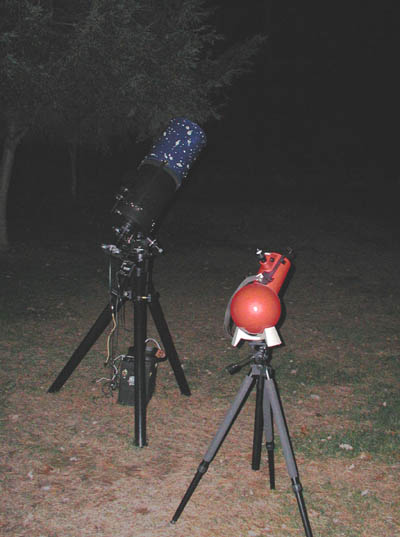
Lunar Eclipse, 8 November 2003. Here are the telescopes set up for observing and photographing. The Astroscan is in the foreground and the Celestron CG-11 is in the background.
I have photographed many lunar eclipses before using print film. This time I decided to try slide film as I have little experience with it. Overall I am very pleased with the results of this first slide film attempt. Below is a smaple image I scanned, I have many more to scan and post.
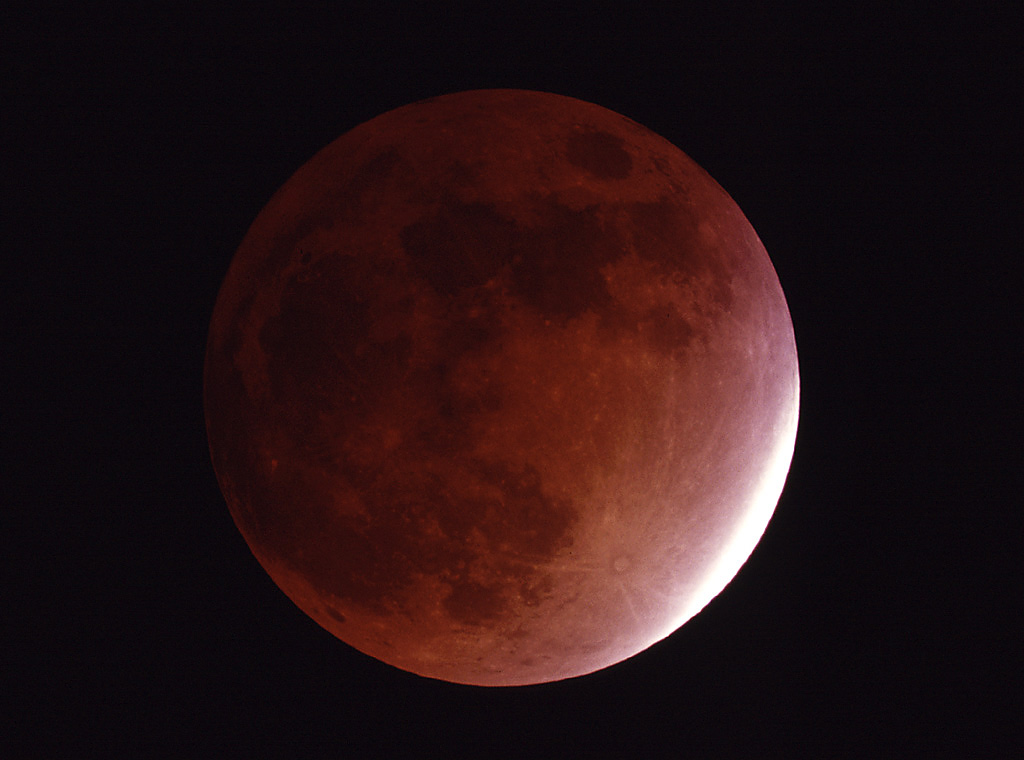
Lunar Eclipse, 8 November 2003. Taken with Celestron CG-11 scope using F6.3 adapter, 200 speed Kodak slide film. Slide scanned using Canon FS4000US slide scanner at 2000 dpi optical. Minor processing in Photoshop (mostly dust removal). Moon was just about in totality at this point. This shot is sized to be just about perfect for screen wallpaper (when mointor is set to 1024x768).
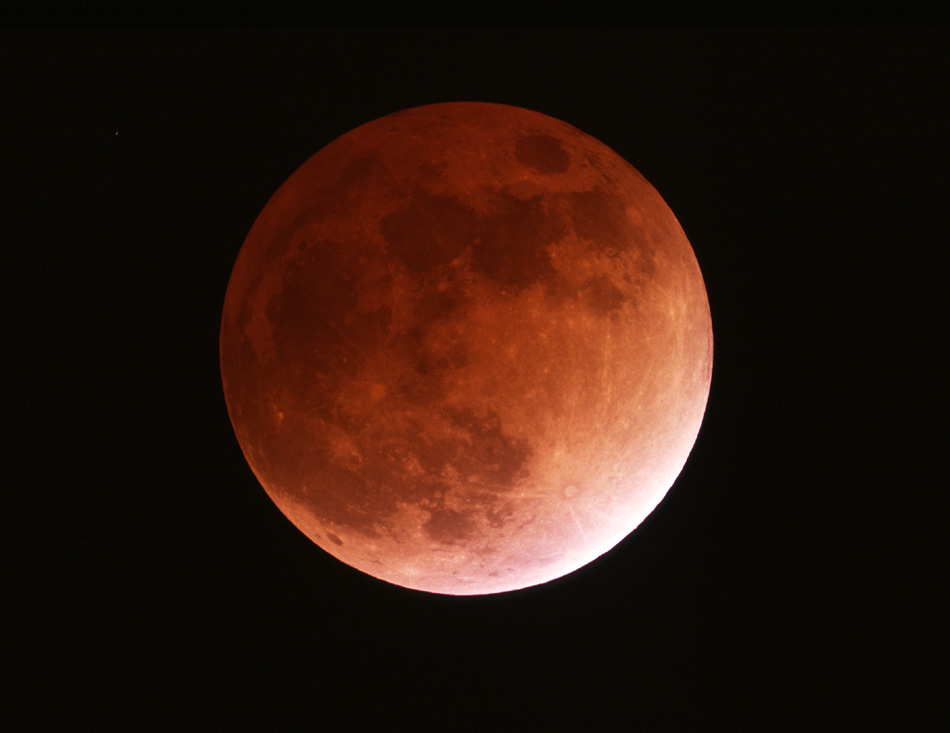
Lunar Eclipse, 8 November 2003. Taken with Celestron CG-11 scope using F6.3 adapter, 200 speed Kodak slide film. Slide scanned using Canon FS4000US slide scanner at 2000 dpi optical. Minor processing in Photoshop (mostly dust removal). "Dot" at upper left of the Moon is a star. Exact exposure not known, I was shooting mostly 3 to 15 second exposures, this is probably around 5 seconds.
Use your browser's "back" button, or use links below if you arrived here via some other path:
This page is part of the site Amateur Astronomer's Notebook.
E-mail to Joe
Roberts
Images and HTML text © Copyright 2003 by Joe Roberts. Please request permission to use photos for purposes other than "personal use".